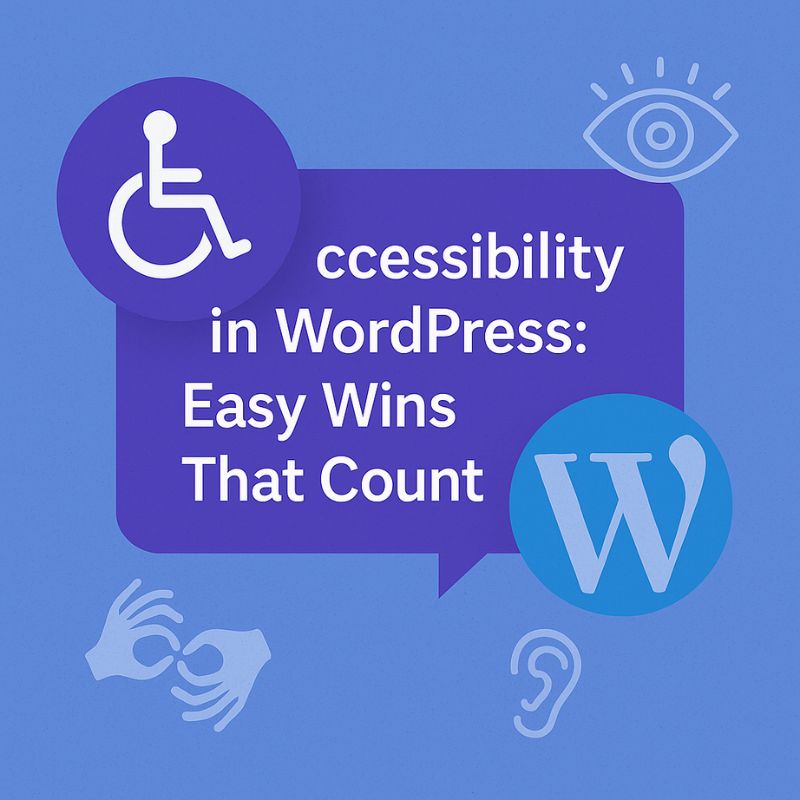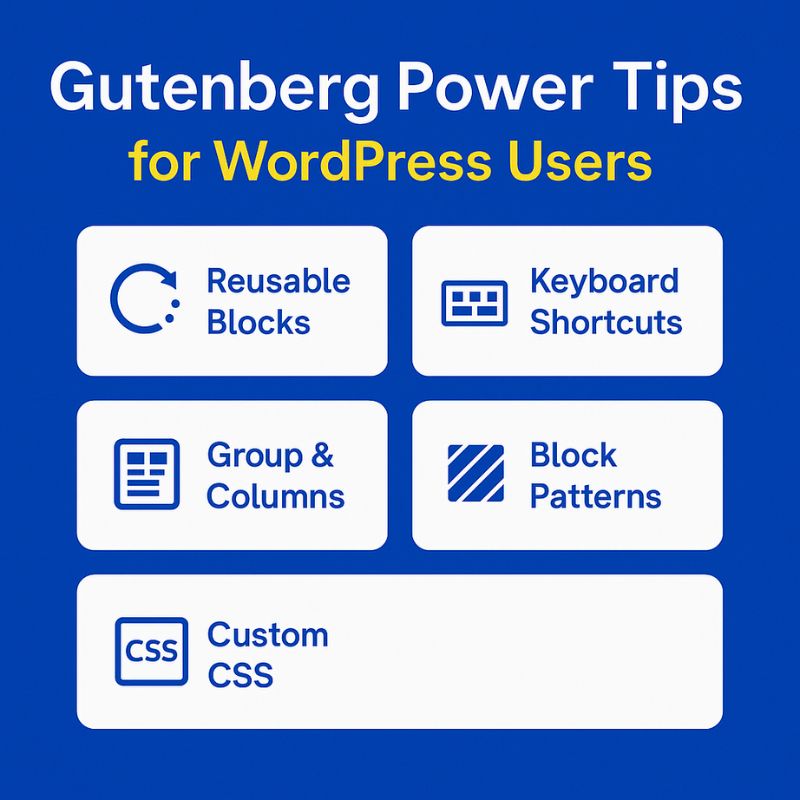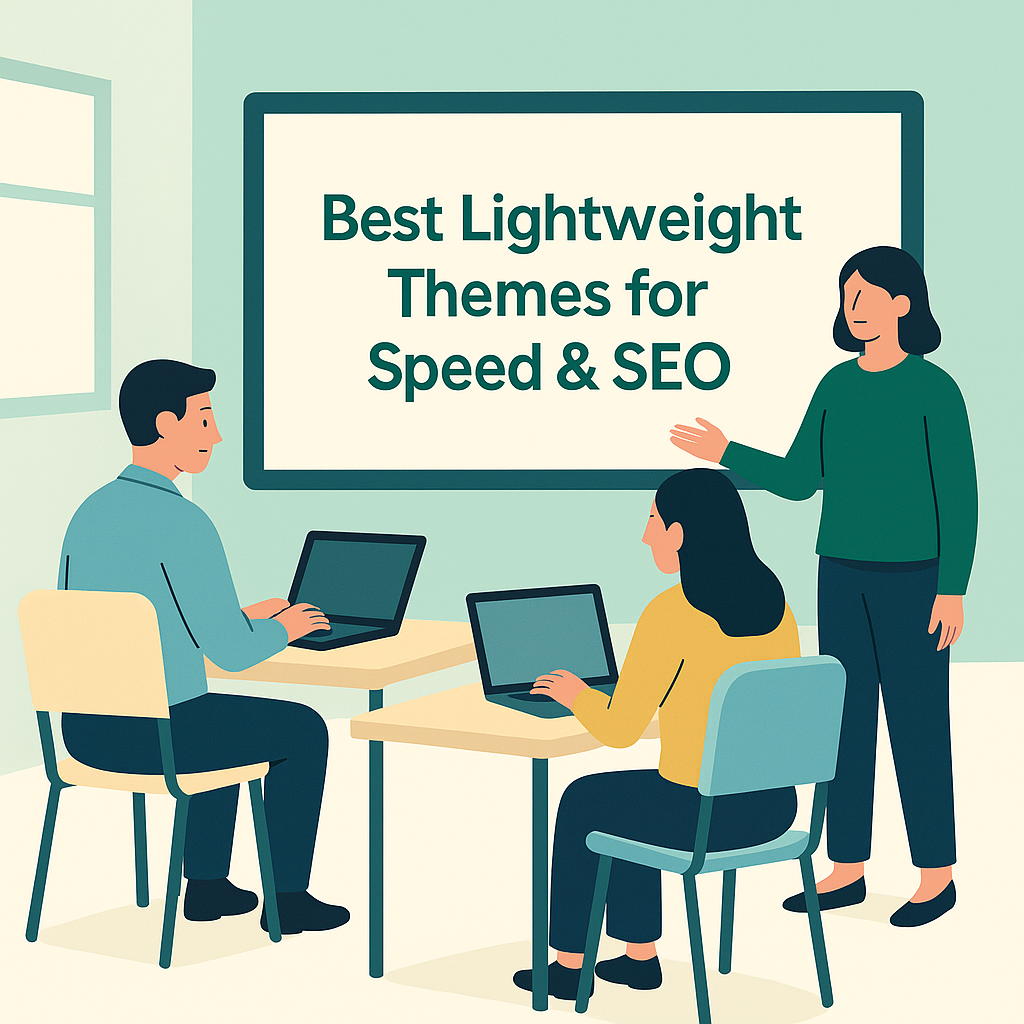Accessibility in WordPress: Easy Wins That Count

WordPress Accessibility: Easy Wins That Count
When creating a website with WordPress, design and content often take center stage. However, WordPress accessibility is equally important because it ensures that everyone, including people with disabilities, can access your site. In addition, accessibility benefits SEO, improves usability, and enhances the overall user experience. This guide explores practical, easy-to-apply techniques that will help you improve accessibility without needing advanced coding knowledge.
Why WordPress Accessibility Is Essential
First of all, accessibility ensures inclusivity. A website that everyone can use is a website that reflects your values as a brand. Moreover, search engines reward sites that are user-friendly and accessible, which means WordPress accessibility can directly improve your SEO performance.
Furthermore, many countries legally require websites to follow accessibility standards like WCAG. Therefore, by improving your site now, you reduce legal risks while showing social responsibility. For deeper standards, you may review the official WCAG Guidelines.
Easy Wins for WordPress Accessibility
1. WordPress Accessibility Through Headings
Headings provide structure to your content. In fact, both search engines and screen readers rely on headings to understand context.
Always begin with a single <h1> for the main title, followed by logical <h2> and <h3> subheadings.
As a result, users with assistive technologies will find it easier to navigate.
2. Alt Text for Images in WordPress
Although this article avoids image sections, most sites rely on visuals. Therefore, adding descriptive alt text ensures
that visually impaired users understand the image content. In addition, alt text supports SEO by helping search engines interpret images.
3. Improve Accessibility with Color Contrast
Readable text requires sufficient contrast. For example, black text on a white background works better than light gray on white. Consequently, always check your design using tools like the WebAIM Contrast Checker. This simple step dramatically improves accessibility.
4. Keyboard Navigation for Accessible WordPress
Not all users navigate with a mouse. In fact, some rely solely on keyboards. Therefore, ensure menus, forms, and buttons can be accessed via the Tab and Enter keys. This easy win makes a big difference for people with mobility impairments.
5. Accessible WordPress Themes
Fortunately, the WordPress repository offers “Accessibility Ready” themes that already meet basic standards. Choosing such a theme saves time and effort. In addition, regularly updating your theme ensures you benefit from ongoing accessibility improvements.
6. Accessibility Plugins for WordPress
Plugins extend functionality, but they can also break accessibility. Therefore, choose plugins carefully. For example, explore recommendations in our guide: WordPress Browser Plugins. By selecting accessibility-friendly plugins, you enhance usability without adding barriers.
7. Descriptive Links Improve Accessibility
Using vague links like “click here” is confusing. Instead, write descriptive text such as: Start a WordPress blog. As a result, both screen reader users and SEO bots better understand the link’s purpose.
8. WordPress Accessibility with ARIA Labels
ARIA attributes provide additional context for assistive technologies.
For example, adding aria-label to buttons clarifies their function.
Consequently, users with screen readers experience less confusion.
9. Screen Reader Testing for WordPress Sites
Although plugins and themes claim to be accessible, nothing replaces real testing. Therefore, test your site with free tools like NVDA or built-in options like VoiceOver on Mac. As a result, you’ll uncover issues that automated checkers might miss.
10. Accessible WordPress Forms
Forms must be labeled clearly. In addition, error messages should be descriptive. For instance, instead of showing only “Invalid,” you could say “Email address format is invalid.” This way, users immediately understand how to fix the issue.
WordPress Accessibility and SEO: The Perfect Partnership
It is important to realize that accessibility improves SEO. For example, descriptive headings, structured content, and alt text boost search visibility. In addition, Google increasingly rewards sites that prioritize user experience. Consequently, WordPress accessibility contributes directly to higher rankings.
When testing your site across different browsers, compare guides like: Google Chrome Guide 2025, Firefox Browser Guide 2025, Microsoft Edge 2025, Opera Browser 2025, and Chrome vs Brave.
Long-Term WordPress Accessibility Strategy
To begin with, accessibility should not be treated as a one-time checklist. Instead, think of it as an ongoing process. For instance, each time you add a new plugin, test its accessibility. Similarly, update your theme and WordPress core regularly.
In addition, educate your content creators. Writers must use headings properly, provide descriptive alt text, and avoid jargon. As a result, your website remains accessible long after the initial setup.
For developers, the WordPress Developer Accessibility Handbook offers valuable long-term guidance.
Conclusion: Easy Wins for WordPress Accessibility
In conclusion, WordPress accessibility benefits everyone: users, search engines, and businesses. By applying easy wins — like heading structure, alt text, ARIA labels, and accessible themes — you’ll create a website that is inclusive and future-proof. Moreover, these improvements enhance SEO, boost usability, and build trust with your audience.
Accessibility is a journey rather than a destination. Therefore, commit to continuous improvement and testing. As a result, your WordPress site will stand out as a reliable, user-friendly resource on the web.


